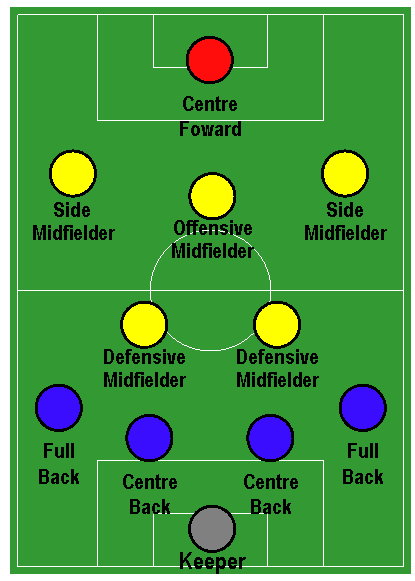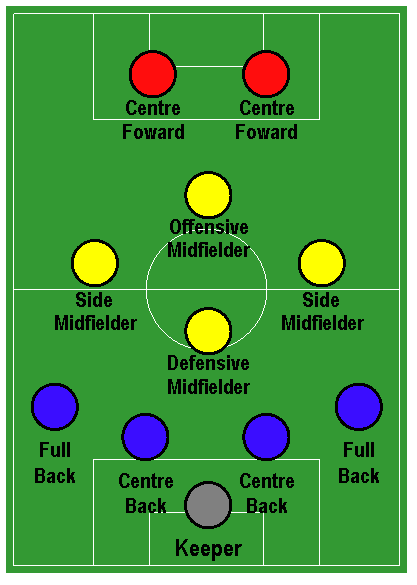Written by: Patrick He
Manager

Vladimir Petkovic
Vladimir Petkovic is the current manager of Switzerland. He was born in Sarajevo and played professionally as a midfielder in both Bosnia and Switzerland. He began his coaching career as a player-coach at Bellinzona in 1997. After retiring from soccer in 1999, he moved to Malcantone Agno, a third division Swiss team. After leading them to promotion in the 2002-03 season, Petkovic went to coach FC Lugano in the second division. In 2005, he rejoined Bellinzona, where he led the team to the 2007-08 Swiss Cup final and later that year, promotion to the Super League. Petkovic then joined Young Boys in the Super League in 2008, finishing runner-ups in his first two seasons in charge. Following two short stints at Samsunspor and Sion, Petkovic was named the manager of Serie A side SS Lazio, where he won the Coppa Italia in his first season and later led the club into the knockout stages of the Europa League. In January 2014, Petkovic was appointed the successor of Switzerland coach Ottmar Hitzfeld, who was to retire after the 2014 World Cup (“Vladimir Petkovic” 1).
As the Swiss manager, Petkovic has implemented a “boot-camp regime” modeled after former England manager Fabio Capello’s rules. His rules include a ban on cell phones at team meetings, shoes on during meals, and meals where the entire team sits at the same table in order to build team spirit (Cross 1). Petkovic also tries to keep his players guessing about the team’s lineup and keeps the public away from training session to preserve privacy (Cross 1). One thing special about Switzerland’s manager is that he speaks eight different languages. In a country as diverse as Switzerland, he is able to effectively communicate with all of his players as well as understand the nuances that may exist between different languages.
Style of Play
Switzerland generally lines up in a 4-3-3 or 4-2-3-1 formation, although it has also used two-striker formations during Euro qualification. A 4-3-3 formation typically consists of two wingers and one center forward, along with three midfielders. The 4-2-3-1 is similar in that it also has wide players, but they tend to play deeper, and the formation usually has a central attacking midfielder that sits behind the single center forward. In both cases, the midfield can be quite varied, which is one of the reasons that Petkovic has had to experiment so often with the team. For example, Gokhan Inler is more of a defensive-midfielder while Granit Xhaka is more of a deep-lying playmaker or defensive box-to-box midfielder.
Overall, the Swiss formation is conducive to a high-energy and high-press strategy. When attacking, up to seven players can comfortably press up the pitch. The two fullbacks can support the wingers and make overlapping runs in order to cross the ball. Two of the three midfielders can also press up, with the remaining defensive midfielder staying back along with the two center backs. One of the key features is that the three central midfielders are typically arranged in a triangle, meaning they can dominate possession passing between themselves. This formation requires a lot of discipline, particularly from the wide players, because it can vulnerable to a counter. As a result, the fullbacks specifically have to ensure that they do not over-commit themselves, and they need to have a high workrate in order to track back to defend.
When defending, Switzerland pressure the opposition aggressively. When playing with a 4-2-3-1, the team typically uses all four attacking players to pressure the opposite defensive. The other midfielders will also press up, and the back four sits in a flat line (Tighe 1). However, one problem with this style is that the midfield can be left exposed if the opposition plays the right passes. Since only two midfielders are sitting back, the midfield can potentially face a 4-on-2. A 4-3-3 helps to alleviate this if all three of the central midfielders sit deeper when defender, but this means that the team will press less aggressively (Tighe 1).


4-2-3-1 formation 4-3-3 formation
In addition to the 4-2-3-1 and the 4-3-3, Petkovic has also used the 4-1-2-1-2 (or 4-4-2 diamond), such as during Switzerland’s 3-0 win against Estonia. This formation uses a diamond midfield, with a central defensive midfielder, two central midfielders slightly ahead of him, and one attacking midfielder behind two center forwards. This formation lacks wingers, so the fullbacks have both an offensive and defensive duty, requiring a very high workrate. When attacking, the CDM drops back to help the two center backs defend, while the rest of the team pushes up. One advantage of this formation is that the team gains an extra striker, which can both attack the opposing center backs. They can also play off of each other, especially by selecting two players with complementing qualities. Another advantage is that with four central midfielders, the opposition will often find itself outnumbered. Under Petkovic, when starting with a 4-1-2-1-2, Switzerland has tended to play Shaqiri, who is usually a right winger, in the central attacking midfield spot. This formation can also make use of wide midfielders instead of two central midfielders, though Switzerland generally does not play with that style.

4-1-2-1-2 (4-4-2 diamond) formation
Strengths
Switzerland is a team with a lot of energy and pace and will do well on the counter-attack. Xherdan Shaqiri, Switzerland’s best attacking player, is quick, good at dribbling, and possesses good vision. Moreover, its full-backs are effective at pushing forward; in particular, the left-back Ricardo Rodriguez is an adept crosser of the ball. As long as the team can pass effectively, which is likely with a strong midfield led by Granit Xhaka, Switzerland will be able to fashion chances. Considering that the team had 30 attempts on goal in its 7-0 win against San Marino during qualifying, it should be able to open up opposing defenses effectively this summer.
The team also has several players with experience from the 2014 World Cup. Many younger players like Xherdan Shaqiri, Granit Xhaka, Admir Mehmedi, Michael Lang, Haris Seferovic, Ricardo Rodriguez, and Fabian Schar were included in the Switzerland squad and are likely to be called up again. As a result, even with the loss of some older veterans, the team itself has experience playing together and coping with the massive pressure that will inevitably come with Euro 2016.
Overall, there is an abundance of Swiss talent available for selection. While there is no true superstar on the team, there are enough good players that Vladimir Petkovic could probably create two 23-man squads without sacrificing too much quality in either. This is important because it means that the team will be able to rest players if necessary during the tournament, and it also means that injuries will be unlikely to cripple the team.
Weaknesses
Switzerland’s greatest weakness right now is its lack of form. In its two most recent friendlies, against the Republic of Ireland and Bosnia-Herzegovina, it failed to score a single goal, losing both matches. In both games, Switzerland had problems with changing tempo in the game and transitioning towards attack. The team seemed sluggish, unimaginative, and static, leading to few attempts on goal (Maciel 1). Moreover, mentally, Switzerland seems to struggle when falling behind, and with all the experimentation that is going on with its new manager, the players could lose confidence if the team does not start out strong this summer.
Another weakness of Switzerland that was shown through its recent friendlies is that its center backs can be inconsistent. The team’s top choices include Fabian Schar, Johan Djourou, and Timm Klose. The problem is finding the proper center back pairing and ensuring that there are no lapses in concentration or mistakes at the back.
A final problem with the team right now is that it lacks a prolific center forward. In the 2014 World Cup, Haris Seferovic and Josip Drmic were the ones chosen to lead the line. Unfortunately, Drmic suffered a season-ending injury in March and will not be fit in time for Euro 2016. Another option that Switzerland has is 18-year old wonderkid Breel Donald Embolo, who plays for FC Basel. Despite his young age, he has been described as a complete forward – “powerful, technically strong, and decisive” (Potter 1). However, he lacks international experience and is untested at the highest level of soccer, so it remains difficult to tell how he will perform at Euro 2016.
How to cite this page: “Switzerland Strategy and Tactics”, Written by Patrick He(2016). European Cup 2016 Guide, Soccer Politics Blog, Duke University, http://sites.duke.edu/wcwp/tournament-guides/european-cup-2016-guide/underrated-teams-of-euro-2016/switzerland/strategy-and-tactics/ (accessed on (date)).
